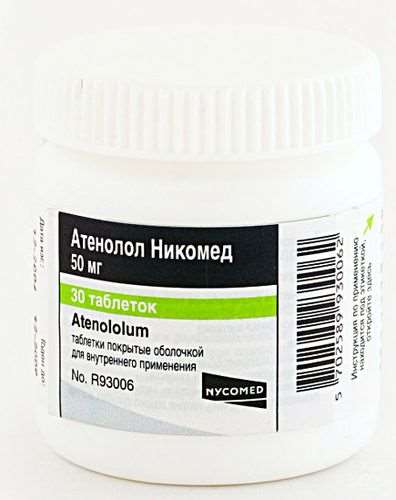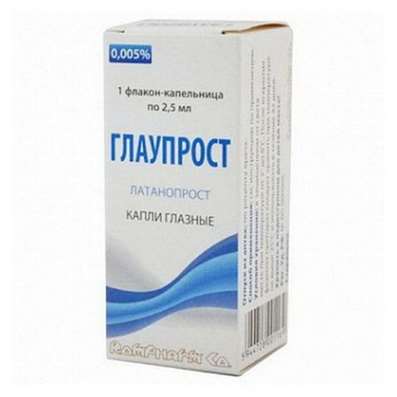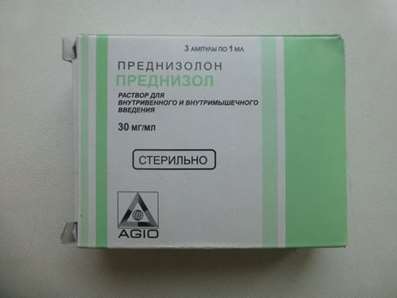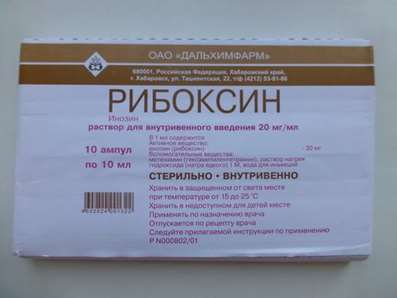Instruction for use: HyperHAES
I want this, give me price
Dosage form: Solution for infusions
Active substance: Amylum hydroxyaethylicum
ATX
B05AA07 Hydroxyethyl starch
Pharmacological group
Plasma-replacing agent [Substitutes for plasma and other blood components]
The nosological classification (ICD-10)
E86 Decreased fluid volume [hypovolaemia]: Water deficit recovery; Indemnification of isotonic deficiency of water; Compensation for isotonic sodium deficiency; Compensation BCC; Replenishment of water deficit with stored KShS; Replenishment of fluid volume; Replenishment of BCC; Replenishment of electrolytes with stored KHS; Hypovolemic conditions; Hypovolemic condition; Hypovolemia; Hypotonic form of hypohydration; Hypochloremia with dehydration; Dehydration of different origin; Dehydration in children; Substitution of plasma volume for blood loss in pediatrics; Substitution of plasma with its losses and burns; Isotonic dehydration; Isotonic form of hypohydration; Violation of the water-salt balance; Dehydration;Dehydration in acute intestinal infections; Acute hypovolemia; Loss of fluid in burns; Toxicosis with exsycosis
R57.1 Hypovolemic shock: Hypovolemic shock during surgery; Acute hypovolemia
Composition
Solution for infusion - 1000 ml
Active substances: Hydroxyethyl starch (HES) 200 / 0.5 60 g
(With a degree of molar substitution of 0.5 and an average molecular weight of 200,000 Da)
Sodium chloride 72 g
Auxiliary substances: hydrochloric acid 25% (for pH correction) - q.s .; Sodium hydroxide (for pH correction) - q.s .; Water for injection - up to 1000 ml
Electrolytes: Na + - 1232 mmol / l; Cl- 1232 mmol / L
Parameters: pH - 3,5-6; Theoretical osmolarity - 2464 mosmol / l; Titratable acidity - <1 mM NaOH / l
Description of dosage form
Transparent or slightly opalescent colorless or slightly yellowish solution.
Pharmachologic effect
Mode of action - Plasma-substituting.
Pharmacodynamics
HyperHAES is a hypertonic isononic solution. Due to the high osmolarity of the HyperHAES preparation, the liquid (mainly from the intercellular space) quickly moves to the blood vessels, as a result of which the blood pressure and the volume of cardiac output rapidly increase depending on the dose and the rate of infusion of the drug. After the administration of the HyperHAES preparation, the increase in BCC lasts a short time and should be stabilized by the immediate introduction of a sufficient volume of liquid (including saline and colloidal solutions).
Pharmacokinetics
HES is subjected to enzymatic digestion with alpha-amylase of blood, which leads to the formation of oligo- and polysaccharides of different molecular weight. T1 / 2 from the bloodstream for HES is about 4 hours. It is mainly excreted through the kidneys: 50% of the administered dose is excreted in the urine in less than 24 hours. A small amount of the substance is temporarily deposited in the tissues.
In the case of HyperHAES in patients with renal insufficiency, HES can be excreted from the blood by diafiltration, but not by dialysis. In this case, T1 / 2 and the retention time of the substance in the blood are proportional to the severity of renal failure.
30 minutes after the introduction of sodium chloride is evenly distributed throughout the extracellular space. Sodium chloride is excreted mainly through the kidneys, a small amount - with sweat through the skin.
Indications of the drug HyperHAES
Initial treatment at the prehospital stage of acute hypovolemia and shock by a single dose of the drug ("low volume resuscitation").
Contraindications
Confirmed hypersensitivity to HES;
Severe renal failure with anuria;
Pregnancy (before the birth of the child or fetal extraction during operative delivery);
dehydration;
Hypervolemia;
Decompensated chronic heart failure.
With caution: compensated congestive heart failure; Confirmed violations of blood clotting; Hyperosmolarity of blood; Pronounced hyper- or hyponatremia; Severe hyper or hypochloraemia; Severe hepatic insufficiency.
Pregnancy and breast-feeding
Clinical experience of using the drug HyperHAES during pregnancy and during breastfeeding is absent.
Side effects
Anaphylactoid reactions (from simple skin rash to circulatory disorders, shock, bronchospasm and cardiac arrest). In case of intolerance of the drug, the infusion should be stopped immediately and appropriate emergency medical measures carried out.
From the respiratory system: from mild reactions to life-threatening and life-threatening (pulmonary edema, bronchospasm, respiratory arrest). Careful monitoring of patients and the possibility of using resuscitation facilities are necessary.
On the part of the CVS: from mild reactions, including bradycardia, tachycardia, to life-threatening and life-threatening (pulmonary edema, lowering of blood pressure followed by cardiac arrest). Careful observation and the possibility of using resuscitation facilities are necessary.
With the introduction of hypertonic solutions and in the absence of pronounced hypovolemic shock, it is possible to develop a transient decrease in blood pressure.
Caused by dehydration myelinolysis of the brain stem, intracerebral bleeding due to compression and rupture of the meningeal membrane.
Reactions at the site of administration: thrombophlebitis and phlebothrombosis (when injected into the peripheral veins).
An increase in the level of alpha-amylase of blood plasma, which can make it difficult to diagnose pancreatitis.
Dose-dependent disorder of blood coagulability.
The incidence of adverse reactions listed below (see table) is described in accordance with the following gradation: very often -> 1/10; Often -> 1/100, ≤1 / 10; Infrequently -> 1/1000, ≤1 / 100; Rarely -> 1/10000, ≤1 / 1000; Very rarely - ≤1 / 10000, including single messages.
Table
| System-Organ Class | Side effect | Frequency |
| Disorders from the circulatory system and the heart | Decrease in blood pressure in patients without severe hypovolemic shock, left ventricular failure, arrhythmia, pulmonary hypertension in patients without severe hypovolemic shock | Often |
| Laboratory and instrumental data | Increased activity of plasma alpha-amylase | Often |
| Immune system disorders | Anaphylactoid reactions | Rarely |
| Disorders from the metabolism and nutrition | Hypernatremia and hyperchloremia | Often |
| Dehydration | So far it has not been observed, but it is considered possible | |
| Violations of the blood and lymphatic system | Blood clotting disorders | So far it has not been observed, but it is considered possible |
| Disturbances from the nervous system | Myelinolysis of the brain stem | Until now, it has not been observed, but it is considered possible |
| Disturbances from the respiratory system, chest and mediastinal organs | Respiratory distress | So far, they have not been observed, but are considered possible |
| General disorders and disorders at the site of administration | Local reactions of intolerance | So far, they have not been observed, but are considered possible |
Interaction
The administration of the drug together with heparin can prolong the time of bleeding. Avoid mixing with other drugs.
Dosing and Administration
IV, bolus, once (for 2-5 minutes).
The maximum volume is 4 ml / kg (approximately 250 ml for a patient with a body weight of 60-70 kg). Despite the very high osmolality, the drug can be injected into the peripheral vein, but it is preferable (if possible) to the central one.
Duration of treatment: the drug is intended for single administration only. Repeated infusions are not recommended.
Immediately after the administration of the HyperHAES preparation, standard plasma replacement therapy (including saline and colloidal solutions) should be performed, the doses of which are selected in accordance with the patient's condition. If the subsequent standard plasma-substitution therapy includes HES, then the total HES dose received should include HES contained in the previously introduced HyperHAES preparation.
Overdose
Symptoms: hypernatremia.
Treatment: it is necessary to perform compensatory fluid administration and forced diuresis in the presence of hypervolemia.
Precautionary measures
Special attention should be given to increasing the osmolarity of blood plasma, especially in patients with diabetes mellitus.
The concentration of electrolytes, the osmolarity of the blood plasma and the fluid balance should be checked regularly.
It is necessary to pay special attention to the possibility of bleeding associated with the intensive administration of solutions that increase intravascular pressure, as well as hemodilution caused by the HyperHAES preparation.
During the infusion, the patient's condition should be carefully monitored. As with other colloidal plasma-substitution solutions, there is a risk of developing an anaphylactic reaction, the pathogenesis of which is still unknown. However, the introduction of HES is usually not accompanied by the formation of specific antibodies.
To avoid the risk of developing hypervolemia, you should monitor the parameters of hemodynamics.
If any abnormal symptoms and signs (including chills, urticaria, redness, flushing of the blood or a drop in blood pressure) appear in the first minutes of the infusion, the infusion should be stopped immediately.
If the drug is administered in the absence of pronounced hypovolemic shock, there may be a transient decrease in blood pressure or symptoms of volume overload (left ventricular failure, arrhythmia, pulmonary hypertension), especially in patients with reduced cardiac function or with limited coronary blood flow (including cardiosurgery operations ).
Special instructions
Special precautions. Only for single use. The solution should be used immediately after opening the package. Do not combine solutions from partially used bags. Use only clear solution from intact packaging. Dispose of unused solution.
Release form
Solution for infusion. In polyolefin containers (bags) "Friflex" for 250 ml. The container consists of two bags. The first bag with the solution of the preparation contained in it is made of a special polymer, equipped with two ports. The outer protective bag is made of a polymer film.
For 20 or 30 containers are placed in a cardboard box (for hospitals).
Manufacturer
Fresenius Kabi Deutschland GmbH, D-61346 Bad Homburg, VH, Germany.
Production address: 61169, Friedberg, Germany.
The address of the representative office of the company "Fresenius Kabi Deutschland GmbH" in Moscow: 119435, Moscow.
Conditions of supply of pharmacies
For hospitals.
Storage conditions of the drug HyperHAES
In the dark place at a temperature of no higher than 25 ° C. Do not freeze.
Keep out of the reach of children.
The shelf life of the drug HyperHAES
3 years.
Do not use beyond the expiration date printed on the package.

 Cart
Cart





